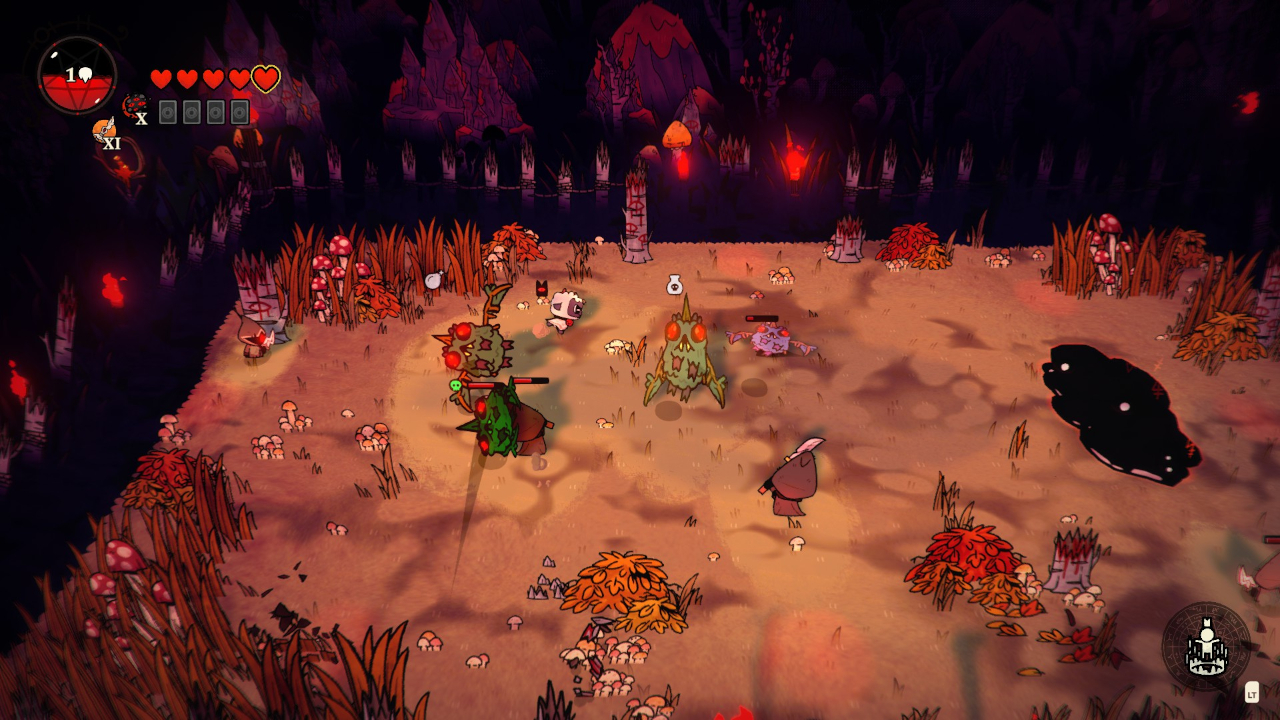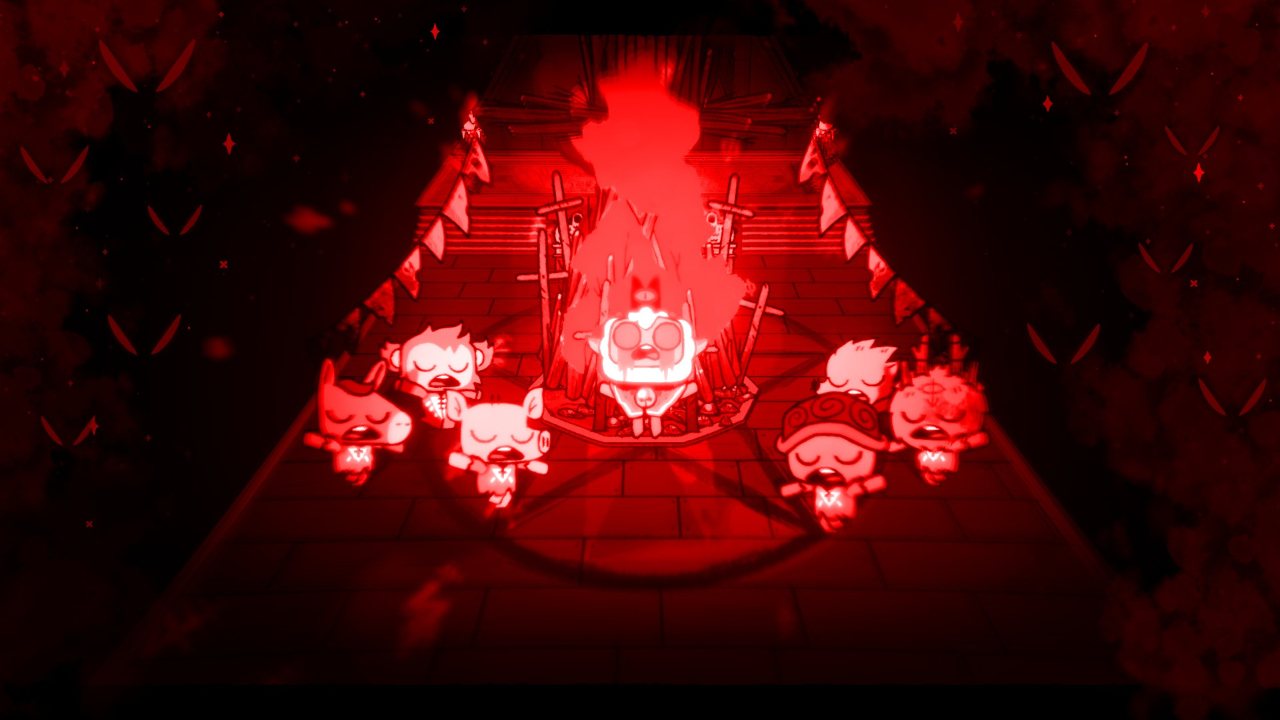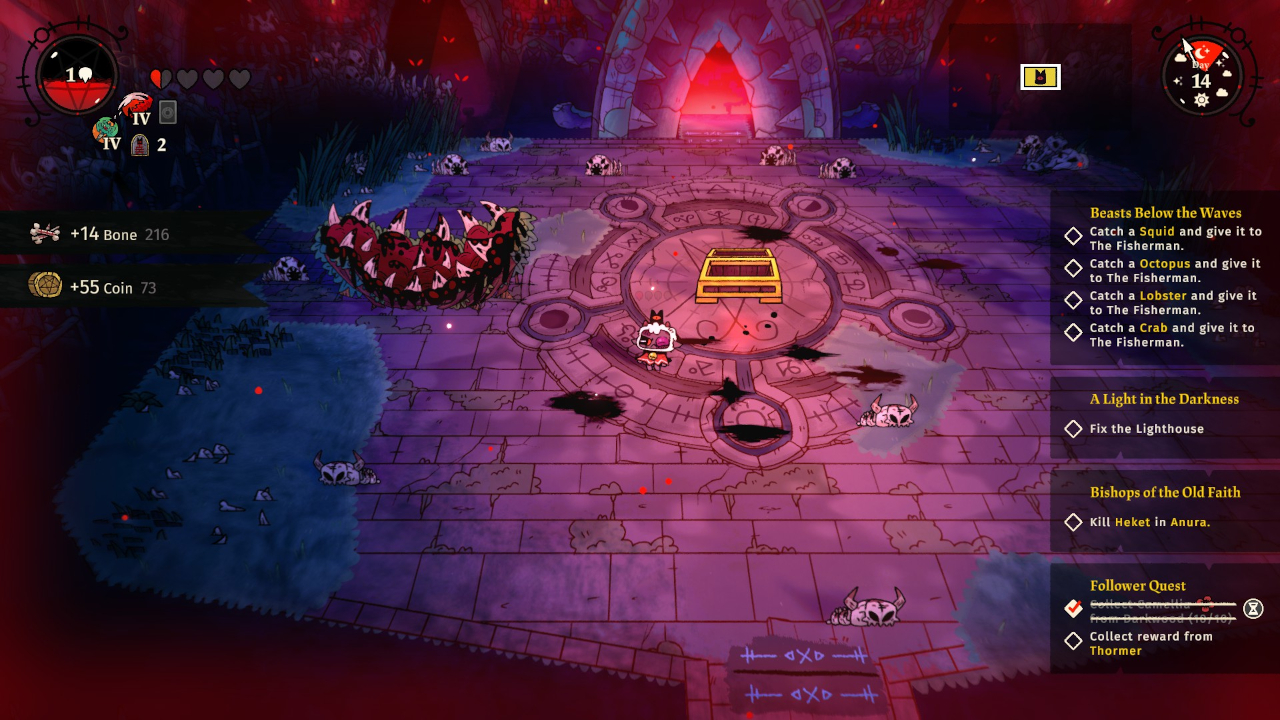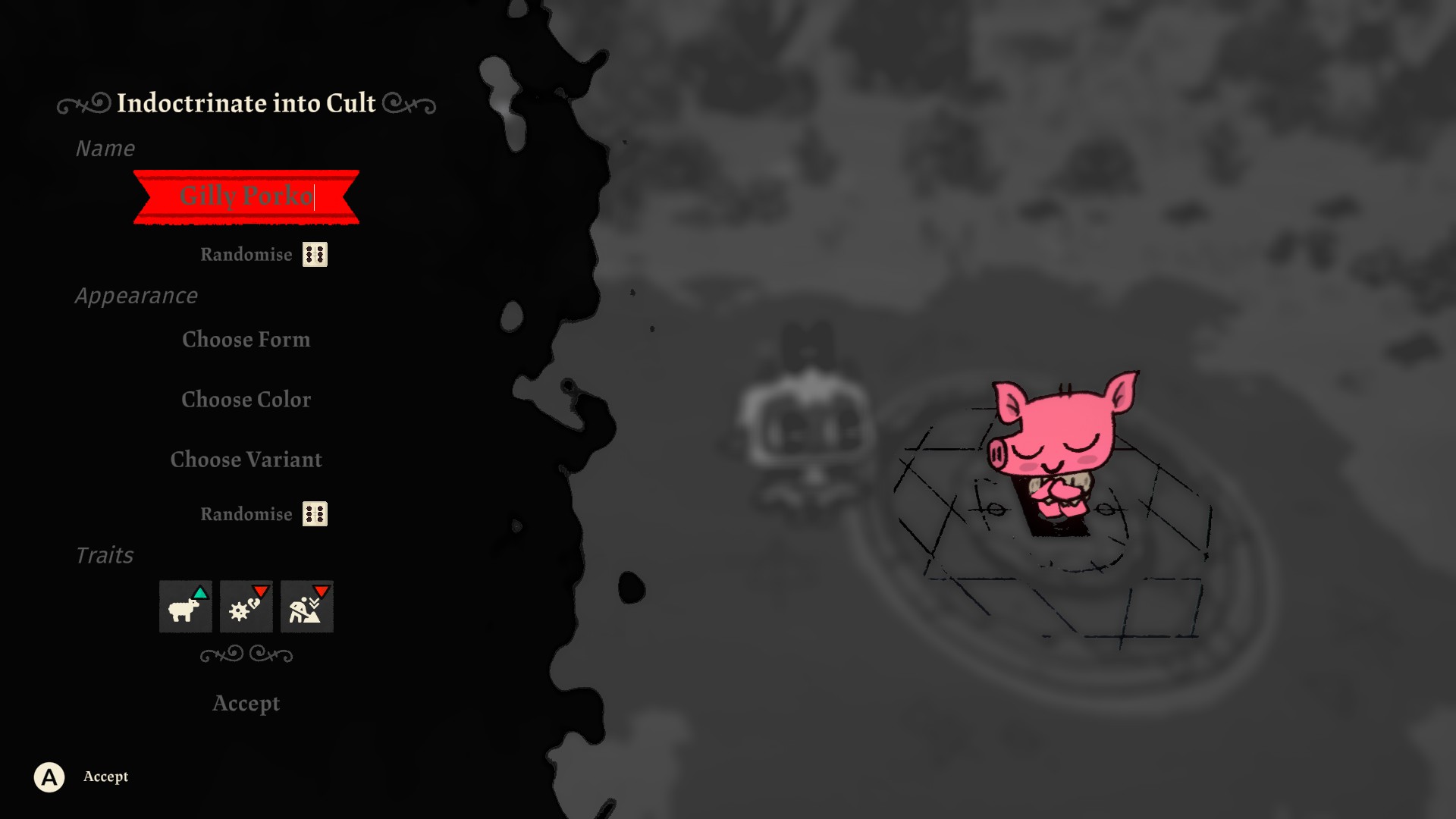Cult of the Lamb review: A roguelike game that is a more sinister version of Animal Crossing


“I am the good shepherd. The good shepherd lays down his life for the sheep.” – John 10:11.
The excerpt above is taken from the bible and is apt to describe Massive Monster and Devolver Digital’s roguelike cult management simulation, Cult of the Lamb.
In Cult of the Lamb, you literally play as a sacrificial lamb. In fact, you are actually the very last of your kind and while you were sent to the great beyond by four Lovecraftian heretic prophets, you are revived by another deity who opposes the quartet. As his vessel, you are not only tasked to defeat them but also to build and grow a cult that would do your bidding.
So in a weird switch of roles, the sheep has now become the shepherd. As this shepherd, you have an ultimate say on how to lead your flock, will you lead with kindness or with fear? Either way, you will be in for an enjoyable experience as Cult of the Lamb masterfully melds fast-paced and nerve-wracking combat with relaxing town management simulation.
Read on to find out if Cult of the Lamb is worth picking up or not.
The Cult of the Lamb’s gameplay is made up of two major parts and complemented by a few mini-games. The first is heading into the various dungeons, slaying the followers of the heretic prophets and eventually having a showdown with them. The second is the management simulation side of things where you have to build up a safe haven for your followers and ensure that all their needs are met.
In terms of combat, Cult of the Lamb adopts all the mechanics you would find in a typical roguelike (sub-genre of RPGs). To get to the final showdown, you will have to clear a dungeon four times. Each time you enter a dungeon, the weapon and curse (spell) you receive, the layout of the rooms, enemies and resources are randomised.
Throughout your battles in each room, you will also find powerups and shops in the form of the tarot card reader, blacksmith, prayer statues and more. Even the items here are randomly generated but at least you get to choose the powerup you think might help in your current run. Powerups from tarot cards can range from the conventional increased damage and extra health to the more unconventional buffs such as doing more damage during daytime or revealing the entire map of the room.

Once you make it to the end of a room, you are then taken to a map made up of more rooms before you reach the boss of that dungeon. You will have to choose your next steps as each room is different and is made up of things like shops, healing pools, followers to rescue or even a room with modifiers. There are also certain rooms that have an NPC that will give you more insight into the overall lore of the game or an NPC that gives you challenges such as not using curses or not taking any damage in three rooms for a hefty reward.
If you have played Hades, you will be right at home with Cult of the Lamb’s combat mechanics as it is about learning enemies’ attack patterns, mastering timing and not getting overzealous with attacks.
The action is fast-paced and satisfying but you can and will easily get overwhelmed and this is when I found myself starting to make mistakes as enemies won’t wait for their turn to attack you. Bosses are also prone to turning the fight into a bullet hell so you will have to learn how to dodge. Because if you die, not only will you lose the resources you pick up but your followers will also lose faith in you.
Speaking of losing faith, the other part of Cult of the Lamb is the cult management that may initially seem to be more relaxing but is in fact actually more involved and requires more of your attention. This is because your followers generate devotion, faith and loyalty. Devotion is used to unlock new abilities, weapons and curses, loyalty is used for unlocking new buildings for your commune and faith is your cult’s lifeblood–the moment it falls too low, your followers will start dissenting and dissuading other followers.

So to keep gathering all three of these important resources, you will have to keep your followers happy by ensuring they have food, shelter and places to work. But to make sure these needs are met, you will also need resources such as stone, wood, gold and food, which can be gathered during your dungeon runs or by building farm plots, lumberyards and stone mines.
Another way to keep your followers happy is to accept and complete their requests. These requests can be as easy as building new decorations to spruce up your commune or to the slightly more zany or sinister such as sacrificing another follower or pranking them to eat poop. Either way, by successfully completing these requests, your follower will be more loyal and thus level up, giving you more devotion and will be more successful when you send them off for missionary work.

Then there are also doctrines which are unlocked when you find three pieces of a commandment stone which will unlock traits, rituals and building. In total there are five groups of doctrines–Afterlife, Work & Worship, Sustenance, Law & Order and Possessions–which contain four tiers with two options each. These doctrines will affect the behaviour of your followers such as how they react to deaths, resurrections, how quickly they gather resources and more.
Initially, during the early stages, I found this part of the game very tedious and extremely repetitive as you have to manually complete a lot of the tasks. However, as you have more followers and doctrines, things become slightly easier and you can leave your followers to complete tasks for you. Until they die that is. Yes, followers age and will die. But even then, they can still be useful as you can resurrect them or turn their bodies into fertilisers for your crops.
Cult of the Lamb utilises a cartoony and very colourful art style that looks really charming. The world is populated with cute anthropomorphic critters that talk in gibberish, similar to Nintendo’s Animal Crossing games and Team Cherry’s Hollow Knight.
However, much like the various notorious real-life cults that like to paint pretty pictures to their followers, what truly lies beneath is grim and sinister. Cult of the Lamb establishes the darker side of this world in a few ways that include the overall storyline, the monstrous designs of enemies and the four heretic prophets and also some of the rituals you can do to your flock of followers.
So if you are playing the game mainly for its cutesy visuals, you will be in for a rude awakening as your followers will defecate and spill their guts after a bad meal, enemies get turned into bones and bosses have their bodies split in half exposing their guts and beating hearts when they are defeated. Even the lamb you control shows signs of injuries such as a bruised eye and bleeding wounds the more health you lose.

This is also complemented further by the incredibly infectious soundtrack by River Boy that plays throughout the game. Tracks go from calming and whimsical while you are pottering around your village to upbeat and intense as you are doing battle in the various dungeons. Some tracks even infuse appropriate noises into them, such as the “clickity-clack” of insect feet in one of the insect-themed dungeons.
There is a lot to love about the art direction of Cult of the Lamb, however, one little nitpick I have is that dungeons will look very samey after a while as each dungeon is on a flat plain and has a limited set of clutter or environmental pieces that get reused for the various rooms.
At the end of the day, Cult of the Lamb was a real surprise to me as I am having a lot of fun with it. Yes, there are parts that can get quite repetitive and tedious, but even after playing for 20 hours (and counting), I am still not quite done with the story, dungeons and building up my commune and meeting the various followers. Not to mention there are also some fun minigames such as the mandatory fishing minigame and a fun dice game known as knucklebones which is a fun way to earn some extra coin on the side.

If you are a fan of roguelike games and want a more sinister version of Animal Crossing, then you owe it to yourself to play Cult of the Lamb. Another great thing about it is that you can even customise your followers so you can name them after your family, friends and even Twitch viewers.
This article was first published in Potions.sg.